Navid Pirmarzdashti
Experimental Evaluation of a Hierarchical Operating Framework for Ground Robots in Agriculture
May 23, 2021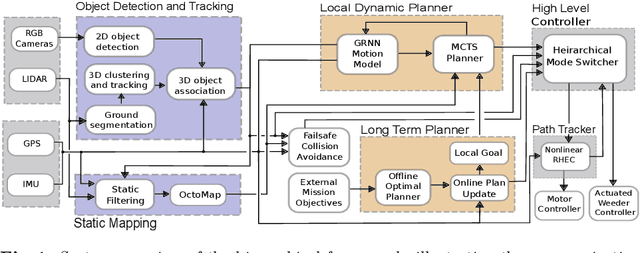
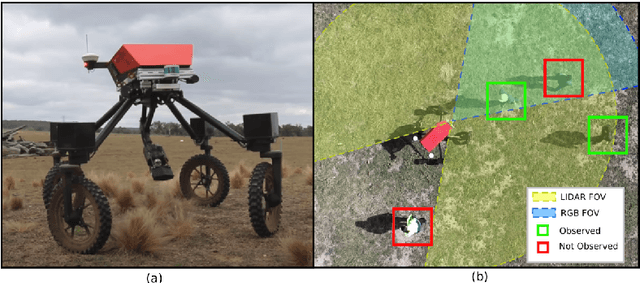
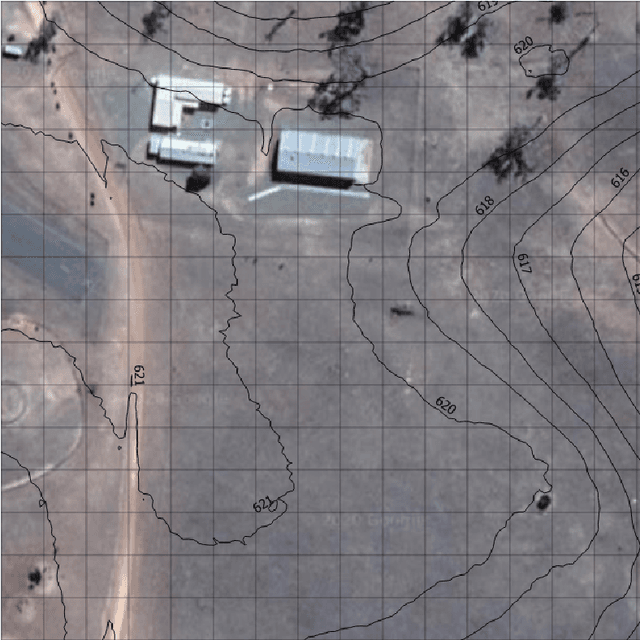
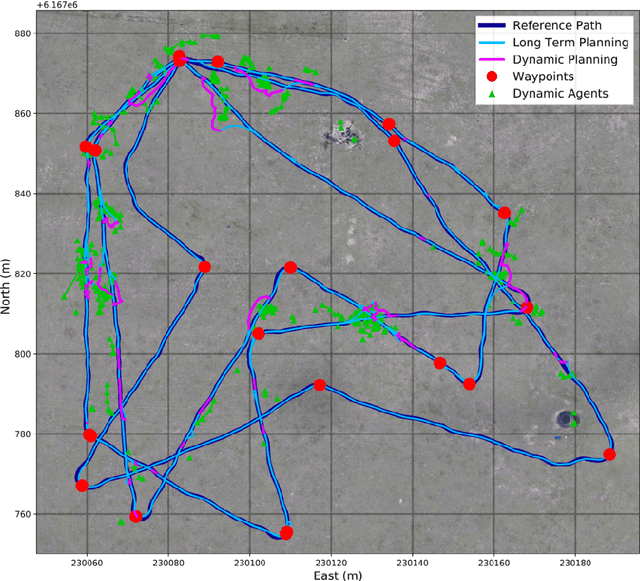
Abstract:For mobile robots to be effectively applied to real world unstructured environments -- such as large scale farming -- they require the ability to generate adaptive plans that account both for limited onboard resources, and the presence of dynamic changes, including nearby moving individuals. This work provides a real world empirical evaluation of our proposed hierarchical framework for long-term autonomy of field robots, conducted on University of Sydney's Swagbot agricultural robot platform. We demonstrate the ability of the framework to navigate an unstructured and dynamic environment in an effective manner, validating its use for long-term deployment in large scale farming, for tasks such as autonomous weeding in the presence of moving individuals.
Resource and Response Aware Path Planning for Long-term Autonomy of Ground Robots in Agriculture
May 22, 2021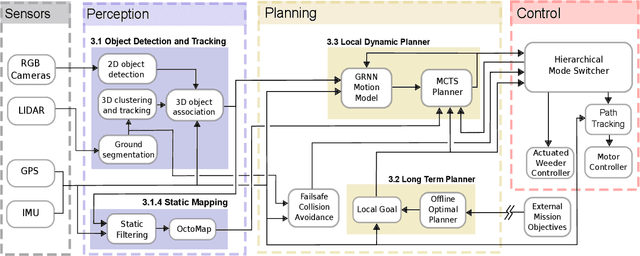

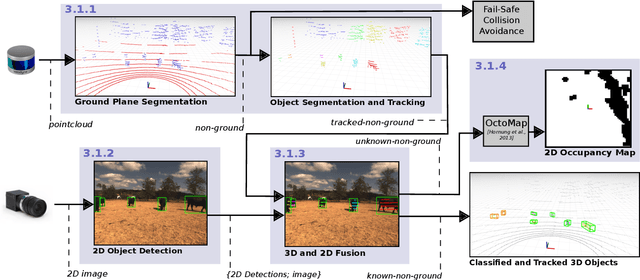
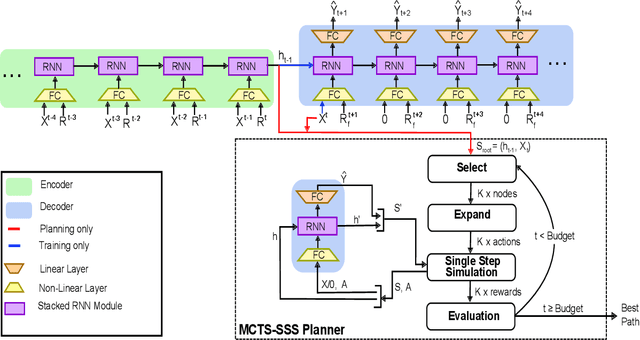
Abstract:Achieving long-term autonomy for mobile robots operating in real-world unstructured environments such as farms remains a significant challenge. This is made increasingly complex in the presence of moving humans or livestock. These environments require a robot to be adaptive in its immediate plans, accounting for the state of nearby individuals and the response that they might have to the robot's actions. Additionally, in order to achieve longer-term goals, consideration of the limited on-board resources available to the robot is required, especially for extended missions such as weeding an agricultural field. To achieve efficient long-term autonomy, it is thus crucial to understand the impact that online dynamic updates to an energy efficient offline plan might have on resource usage whilst navigating through crowds or herds. To address these challenges, a hierarchical planning framework is proposed, integrating an online local dynamic path planner with an offline longer-term objective-based planner. This framework acts to achieve long-term autonomy through awareness of both dynamic responses of individuals to a robot's motion and the limited resources available. This paper details the hierarchical approach and its integration on a robotic platform, including a comprehensive description of the planning framework and associated perception modules. The approach is evaluated in real-world trials on farms, requiring both consideration of limited battery capacity and the presence of nearby moving individuals. These trials additionally demonstrate the ability of the framework to adapt resource use through variation of the local dynamic planner, allowing adaptive behaviour in changing environments. A summary video is available at https://youtu.be/DGVTrYwJ304.
A Hierarchical Framework for Long-term and Robust Deployment of Field Ground Robots in Large-Scale Farming
Jun 24, 2020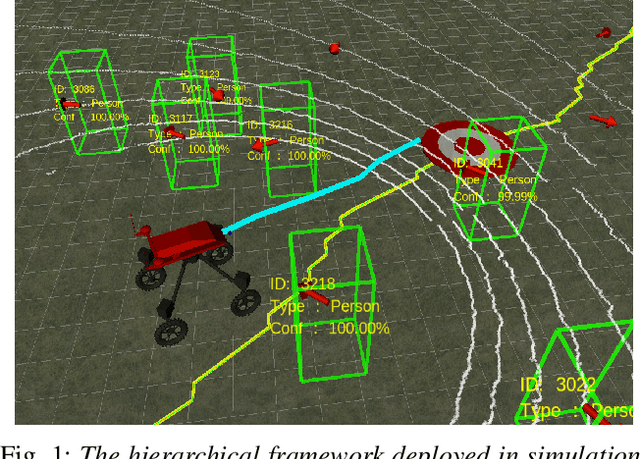

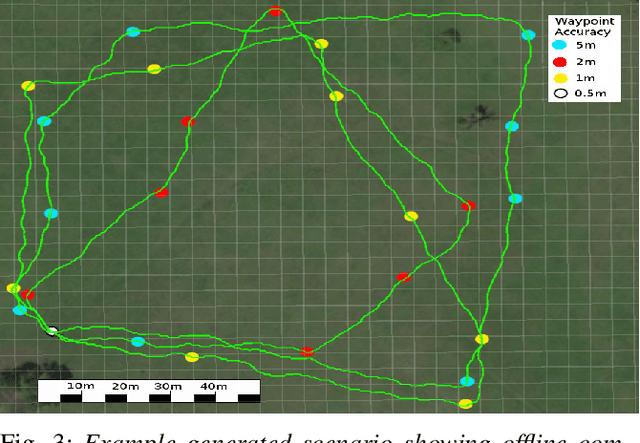
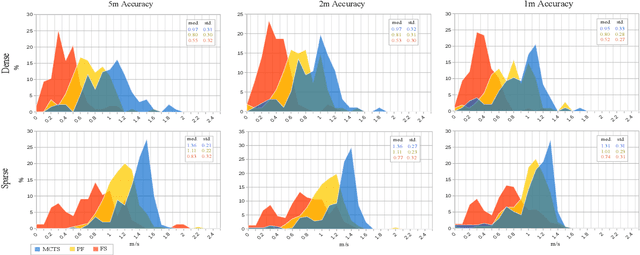
Abstract:Achieving long term autonomy of robots operating in dynamic environments such as farms remains a significant challenge. Arguably, the most demanding factors to achieve this are the on-board resource constraints such as energy, planning in the presence of moving individuals such as livestock and people, and handling unknown and undulating terrain. These considerations require a robot to be adaptive in its immediate actions in order to successfully achieve long-term, resource-efficient and robust autonomy. To achieve this, we propose a hierarchical framework that integrates a local dynamic path planner with a longer term objective based planner and advanced motion control methods, whilst taking into consideration the dynamic responses of moving individuals within the environment. The framework is motivated by and synthesizes our recent work on energy aware mission planning, path planning in dynamic environments, and receding horizon motion control. In this paper we detail the proposed framework and outline its integration on a robotic platform. We evaluate the strategy in extensive simulated trials, traversing between objective waypoints to complete tasks such as soil sampling, weeding and recharging across a dynamic environment, demonstrating its capability to robustly adapt long term mission plans in the presence of moving individuals and obstacles for real world applications such as large scale farming.
Path Planning in Dynamic Environments using Generative RNNs and Monte Carlo Tree Search
Jan 30, 2020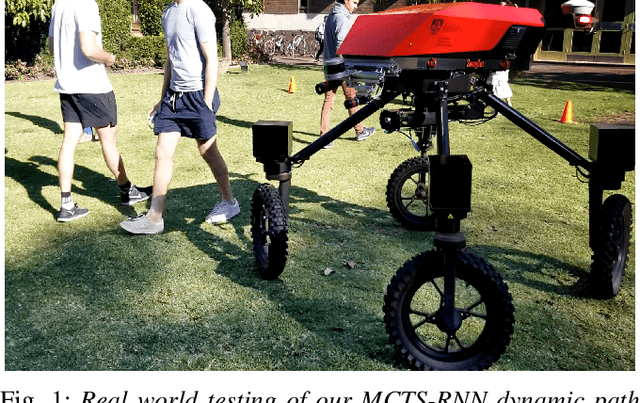
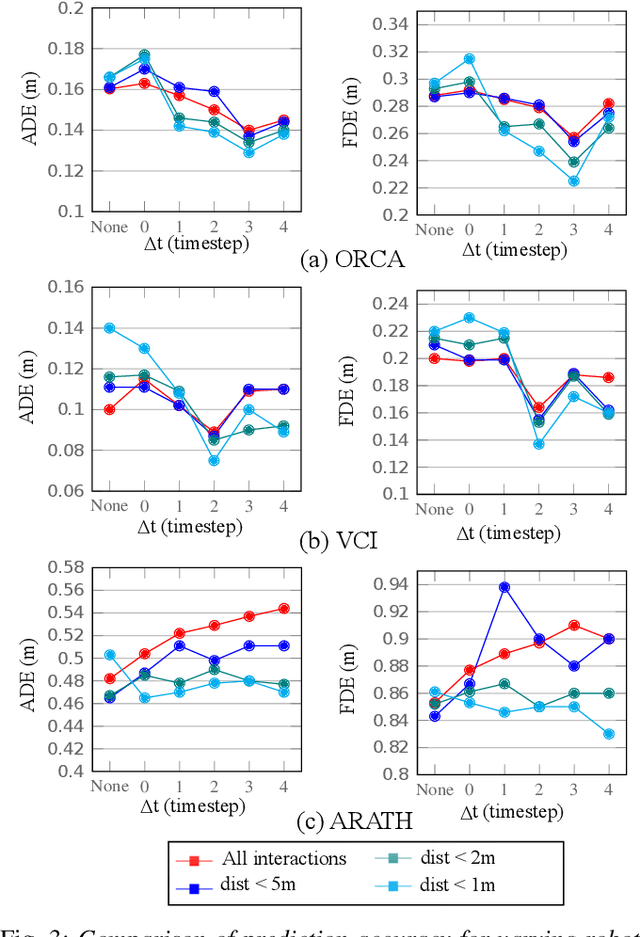
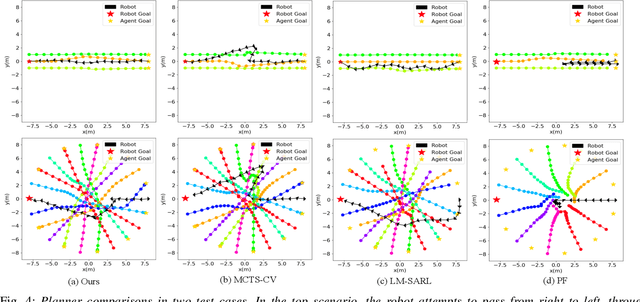
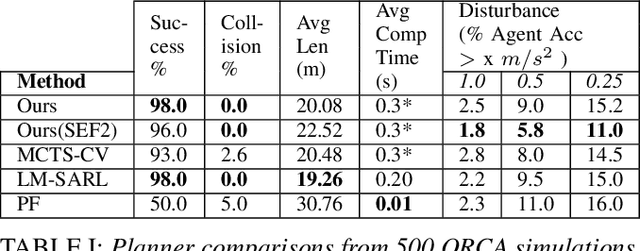
Abstract:State of the art methods for robotic path planning in dynamic environments, such as crowds or traffic, rely on hand crafted motion models for agents. These models often do not reflect interactions of agents in real world scenarios. To overcome this limitation, this paper proposes an integrated path planning framework using generative Recurrent Neural Networks within a Monte Carlo Tree Search (MCTS). This approach uses a learnt model of social response to predict crowd dynamics during planning across the action space. This extends our recent work using generative RNNs to learn the relationship between planned robotic actions and the likely response of a crowd. We show that the proposed framework can considerably improve motion prediction accuracy during interactions, allowing more effective path planning. The performance of our method is compared in simulation with existing methods for collision avoidance in a crowd of pedestrians, demonstrating the ability to control future states of nearby individuals. We also conduct preliminary real world tests to validate the effectiveness of our method.
 Add to Chrome
Add to Chrome Add to Firefox
Add to Firefox Add to Edge
Add to Edge